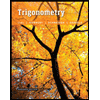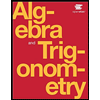4. An insurer issues a 15-year annual premium-due endowment insurance of $100,000 benefit to life (50). The insurer charges an initial expenses of $ 1000 plus renewal expenses of 5% of each subsequent premium after the first premium payment. The premiums are made at the beginning of each year when (50) remains alive before reaching 70 and the benefit is paid at the end of K50 +1 years or when the person reaches the age 70 whichever occurs earlier. (a) Write down the gross future loss random variable L in terms of actuarial notations. (b) Calculate the gross premium-due G by using the Standard Select Survival Model with 5 % per year interest (Table D4) and the equivalence premium principle. 8 (c) Calculate the gross premium policy value V by using the equivalence premium G found in (b).
4. An insurer issues a 15-year annual premium-due endowment insurance of $100,000 benefit to life (50). The insurer charges an initial expenses of $ 1000 plus renewal expenses of 5% of each subsequent premium after the first premium payment. The premiums are made at the beginning of each year when (50) remains alive before reaching 70 and the benefit is paid at the end of K50 +1 years or when the person reaches the age 70 whichever occurs earlier. (a) Write down the gross future loss random variable L in terms of actuarial notations. (b) Calculate the gross premium-due G by using the Standard Select Survival Model with 5 % per year interest (Table D4) and the equivalence premium principle. 8 (c) Calculate the gross premium policy value V by using the equivalence premium G found in (b).
Trigonometry (11th Edition)
11th Edition
ISBN:9780134217437
Author:Margaret L. Lial, John Hornsby, David I. Schneider, Callie Daniels
Publisher:Margaret L. Lial, John Hornsby, David I. Schneider, Callie Daniels
Chapter1: Trigonometric Functions
Section: Chapter Questions
Problem 1RE:
1. Give the measures of the complement and the supplement of an angle measuring 35°.
Related questions
Question

Transcribed Image Text:4. An insurer issues a 15-year annual premium-due endowment insurance of $100,000 benefit to life (50). The
insurer charges an initial expenses of $ 1000 plus renewal expenses of 5% of each subsequent premium after the
first premium payment. The premiums are made at the beginning of each year when (50) remains alive before
reaching 70 and the benefit is paid at the end of K50 +1 years or when the person reaches the age 70 whichever
occurs earlier.
(a) Write down the gross future loss random variable L in terms of actuarial notations.
(b) Calculate the gross premium-due G by using the Standard Select Survival Model with 5 % per year interest
(Table D4) and the equivalence premium principle.
8
(c) Calculate the gross premium policy value V by using the equivalence premium G found in (b).
Expert Solution
This question has been solved!
Explore an expertly crafted, step-by-step solution for a thorough understanding of key concepts.
Step by step
Solved in 2 steps

Recommended textbooks for you

Trigonometry (11th Edition)
Trigonometry
ISBN:
9780134217437
Author:
Margaret L. Lial, John Hornsby, David I. Schneider, Callie Daniels
Publisher:
PEARSON

Trigonometry (MindTap Course List)
Trigonometry
ISBN:
9781305652224
Author:
Charles P. McKeague, Mark D. Turner
Publisher:
Cengage Learning


Trigonometry (11th Edition)
Trigonometry
ISBN:
9780134217437
Author:
Margaret L. Lial, John Hornsby, David I. Schneider, Callie Daniels
Publisher:
PEARSON

Trigonometry (MindTap Course List)
Trigonometry
ISBN:
9781305652224
Author:
Charles P. McKeague, Mark D. Turner
Publisher:
Cengage Learning


Trigonometry (MindTap Course List)
Trigonometry
ISBN:
9781337278461
Author:
Ron Larson
Publisher:
Cengage Learning